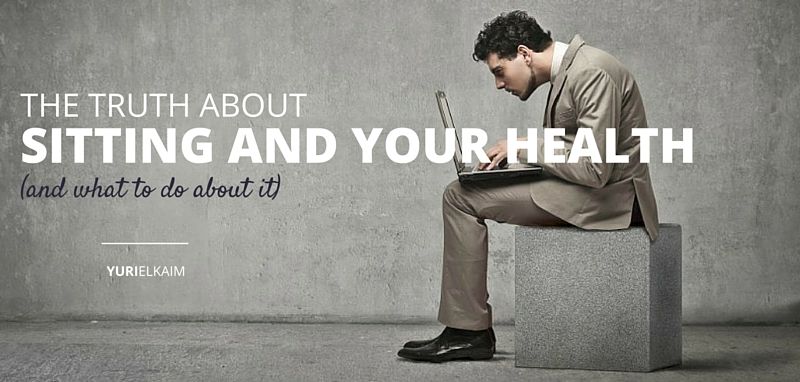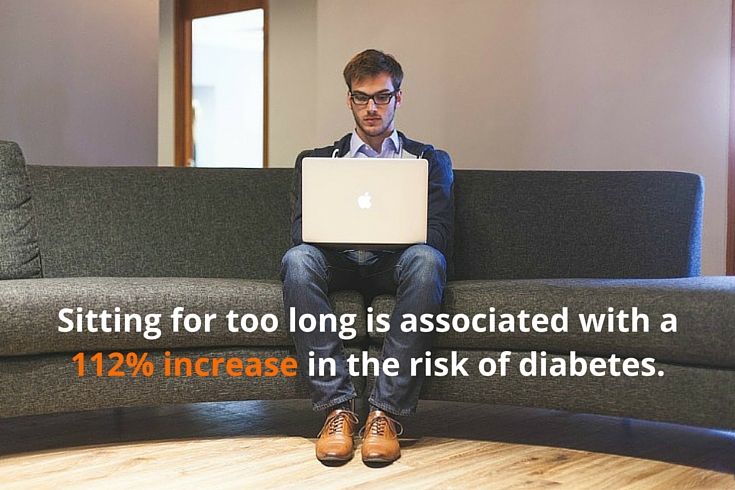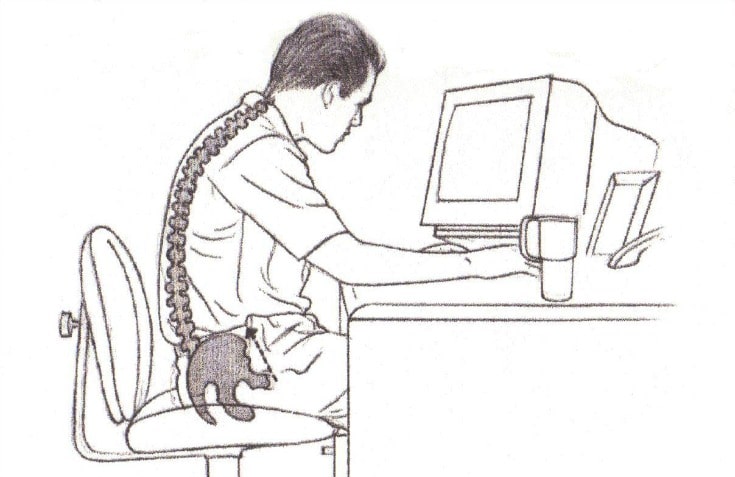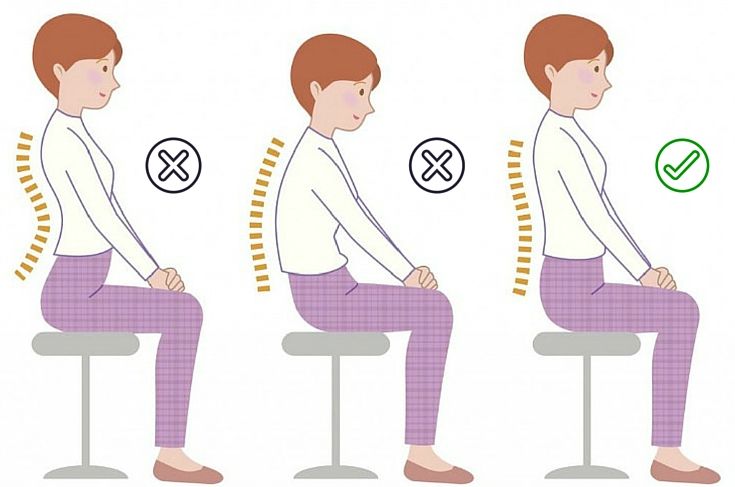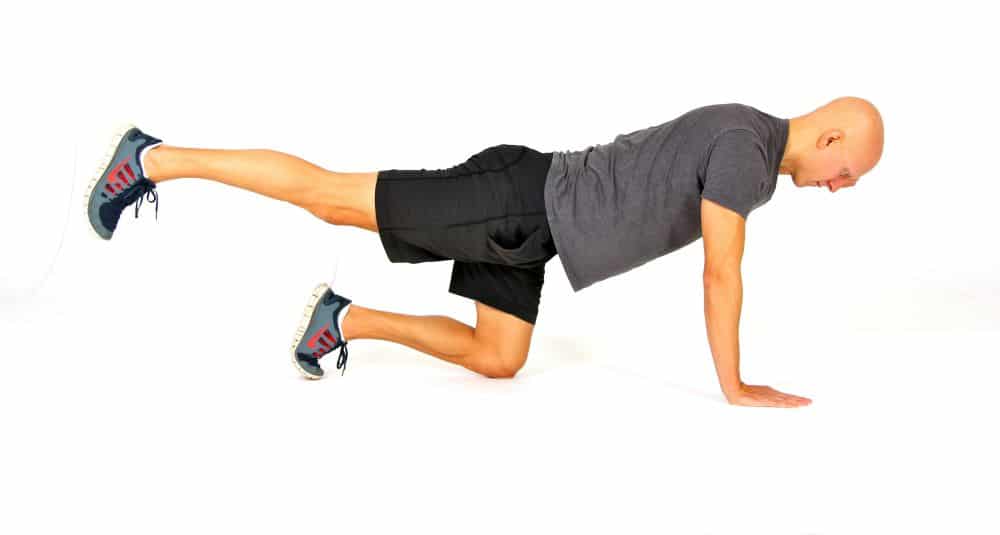In this article
Is sitting too much killing you?
A few years ago, we were bombarded with headlines that roared: “Sitting Is the New Smoking!”
Chances are you tuned them out. First, because you’re used to hearing media hype over sensational new health studies.
And second, if you have to sit at work, what were you supposed to do it about – quit your job?
And seriously: Everybody sits. How could it be not just harmful, but deadly?
Well … I hate to say it, but the headlines were right.
Sitting is, indeed, a major – and insidious – public health hazard.
How and why? Let’s explore why too much sitting is dangerous – and suggest some healthy habits you can incorporate to protect yourself.
Sitting and Your Health
The most obvious problem with sitting is that you aren’t moving. And, logically, you might conclude that this could increase your risk of obesity and related problems like heart disease and diabetes.
And that’s accurate. The simple act of sitting could reduce your metabolism by as much as 30 percent, which may not sound like much but – over years of working a desk job – it adds up (1).
However, it’s worse than that.
According to a 2012 study, published in the journal Diabetologia, sitting for too long is associated with a 112 percent increase in the risk of diabetes, a 147 percent increase in cardiovascular events like heart attacks, a 90 percent increase in death from those cardiovascular events, and a 49 percent increase in death due to any cause (2).
Now, it’s this last point – “death due to any cause” – that is particularly ominous. What does that mean?
Research gives us clues. A massive review of 47 studies published in the Annals of Internal Medicine confirmed that sitting for too long can cause all of the above-noted issues (3).
But it also added cancer to the list of potential concerns.
So, sitting too long can greatly increase your risk of heart disease, obesity, diabetes, and even cancer.
But the problems with sitting keep coming.
When you sit, you’re forcing your body into a position that’s less than ideal, even if you do it right. Sitting places a significant amount of downward force on your spine, compressing your lower back.
Compounding the problem is the fact that most of us don’t sit correctly.
Especially for those who spend hours working at a computer or behind a desk, the issue comes down to posture. Just like when you’re standing, your core muscles are responsible for keeping you upright and protecting the posture of your spine.
This takes a fair amount of energy and strength – and if your core isn’t ready for it, these muscles can give out and leave you slouching forward.
That means now you not only have that compressive force squeezing down on your spine, it’s now in a compromised position so that it can’t handle the load as well.
But we aren’t done yet with the hazards.
Desk workers often find themselves overreaching, stretching their arms out in front of them and hunching their shoulders. By the end of the workday, their poor backs have been forced into a structurally weak condition for eight hours or more.
Returning home exhausted, what’s next on the agenda? For many, it’s watching TV – another seated activity.
And that’s yet more stress on the spine.
Thirty Minutes in the Gym Won’t Fix It
The research review also shows us something startling: Even regular exercise doesn’t undo the damage.
So, you might leave work every day and hit the gym, thinking that you can strengthen and straighten your spine back out but … you can’t.
It makes sense when you look at the numbers.
Let’s say you work out for 30 minutes. That still leaves 8 hours sitting at work, 1 hour in the car for your commute, another 8 sleeping plus however much time you spend in front of the computer or TV at home.
So, in the big picture, that workout just isn’t enough to offset the rest of your daily routine.
Your Body Likes to Move
Let’s be clear: Sitting for a couple of minutes here and there isn’t going to ruin your health.
It’s the lack of movement over an extended period that’s the real concern. According to a 2011 study, the average person spends as much as 60 percent of their day being sedentary.
Even standing in one place for too long can cause back pain and other joint problems (4). Which is frustrating since – in response to everything we just talked about – many people have made the transition to standing desks over the past few years.
The truth is that we aren’t meant to be sedentary. Our bodies are built to move.
So, what can you do to avoid and undo all the problems of sitting (or standing) for too long? We’ll get into more details but for now, consider one simple solution: Don’t do any single thing for too long, too often.
The first and easiest step you can take toward better habits at work is to simply move throughout the day.
Every hour or so, stand up and, if possible, walk around. Or, if you stand for hours on end, instead, sit for a little while, or do some mobility exercises.
You may even be able to take walking meetings rather than sitting around a table. Many companies are starting to embrace this idea based on the understanding that moving is not only healthier for your body, but also encourages creative thinking.
Again, the idea is to not be sedentary – which is a fancy word for doing nothing.
What Is Good Posture?
But now instead of focusing on what’s wrong, let’s talk about what’s right and come up with some solutions.
How can you avoid the problems associated with sitting too much? By relearning proper posture.
It’s easier to start with standing posture, because you can feel the difference fast, and then apply it to seated posture.
What should your standing posture look like?
- Stand with your feet about shoulder width-apart.
- Look forward, with your chin level.
- There should be a straight line from your shoulders down to your feet.
- Keep your knees soft, slightly bent.
- Slight tighten your butt to adjust the position of your pelvic bone.
If you’re able to balance all of these elements, your spine will align itself while you’re standing. If you’re having a hard time getting all those factors together, try this test.
- Stand with the back of your head against a wall.
- Your heels should be about 6 inches from the wall.
- Your butt and shoulder blades should also be touching the wall.
- There should be no more than 2 inches between the wall and your neck or lower back.
Now, we can translate this to seated posture. Sit in a chair and adjust yourself so that your:
- Feet are firmly planted on the ground.
- Knees are slightly lower than your hips.
- Back straight is with the natural curve in your spine intact.
- Shoulders are relaxed.
- Chin is level and you aren’t looking either up or down.
Simple Things to Improve Posture
If you tried to pull off those posture checks, you may have noticed something: they can be pretty challenging.
Your core and back have to work hard to keep you stable and upright.
The key to better posture is to improve the strength and, importantly, the endurance of your core muscles. And because that stamina is so important, exercises that build isometric endurance are key.
Exercises like planks, side planks and bird dogs are going to force your core stabilizers to contract and maintain that contraction for extended periods.
[Related: How to Build Core Strength without Moving a Muscle]
Start with short holds for these exercises, around 20 seconds and gradually work your way up.
These exercises can easily be added to the end of your regular workouts, taking only a few extra minutes. But the payoffs will be huge in your daily life.
Flexibility could also be a roadblock as you try to improve your posture.
Too-tight hips can put your lower back under constant to pressure to slip out of its natural position. Stretches like static lunges will help to loosen them up and allow you get back to a healthy, natural posture. Tacking them on to the end of your workout shouldn’t take too much time, and like the core work, will have definite payoffs.
A Better Way To Sit
There is a healthier way to sit when it comes to posture.
As challenging as it might sound, sitting cross-legged on the floor is the only way to sit that won’t cause any more problems. This position reduces the amount of stress on your spine, encourages good circulation, and trains you to sit upright.
I know, that’s a pretty crazy suggestion to most Americans. But you can start out slow – practicing the pose for just a few minutes at a time at home and gradually increasing how long you can keep it up for.
When life forces you into sitting too long – for instance, for work or travel – it can be easy to feel frustrated and helpless. What are you supposed to do about it?
The simple tactics I’ve explored – getting up to stand at regular intervals, doing some dynamic mobility movements if possible, practicing good posture, and then strengthening your core muscles so you can maintain that posture – all good starts.
The most important takeaway for your health: Move and stretch when your schedule allows.
Tired of Feeling Stiff and Beat Up?
You can drastically reduce stiffness and feel more supple and limber with just a few simple strategies. Download my 11 overlooked post-workout tips that will have you feeling unstoppable fast. Get my Workout Recovery Formula FREE by clicking the banner below.

